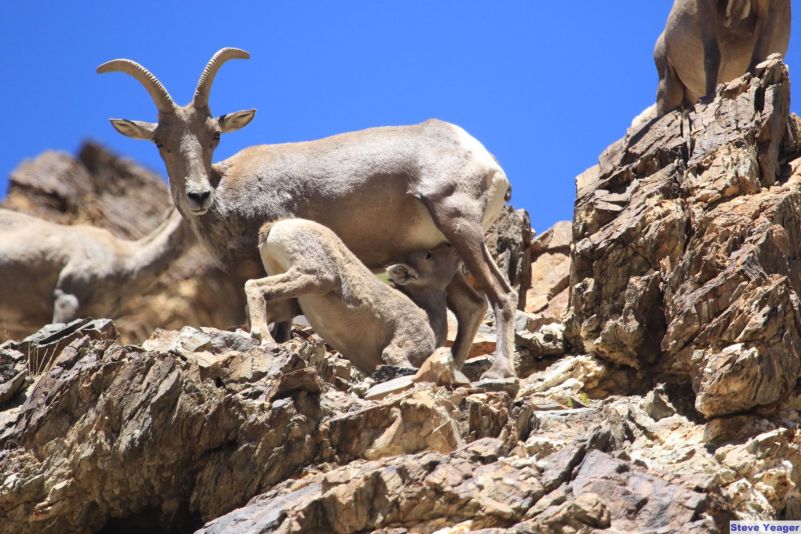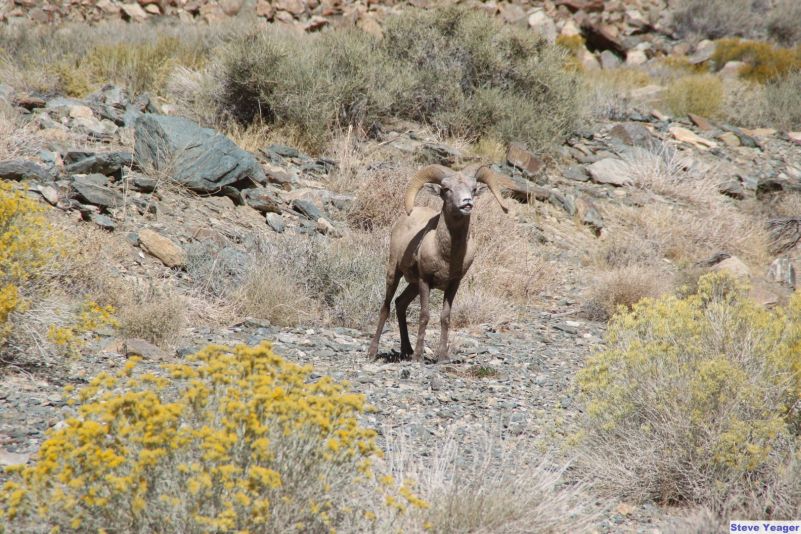Desert bighorn sheep in California inhabit widely varying climates, ranging from the hot, low-elevation Sonoran Desert, to cold alpine desert, and they exhibit high variation in the seasonal timing of lambing (giving birth). Lambing in more southern populations in California can begin as early as December (and occasionally November) and typically extends into May, but with a small number of births June-August. Desert bighorn populations living in cooler conditions in the White Mountains have a shorter lambing season of about 2.5 months, beginning in the second half of April.
The rut can begin as early as May or June in the southern desert region, but as late as the end of October in the White Mountains. For most desert bighorn in California, the rut peaks in August and September.
Pregnancy rates in desert bighorn sheep tend to be high, approaching 90%. Where birthing seasons are long, a year of poor nutrient availability appears to cause later ovulation and conception, rather than a decline in pregnancy rates. Very high recruitment rates can occur in years of favorable spring nutrient availability. The gestation period for bighorn sheep is 6 months.
 A young lamb suckles its mother's teat. Photo by Steve Yeager.
A young lamb suckles its mother's teat. Photo by Steve Yeager.
 A White Mountain ram exhibits the lip curling behavior (flehmen response) used to detect the pheromones ewes release when in estrous. Photo by Steve Yeager.
A White Mountain ram exhibits the lip curling behavior (flehmen response) used to detect the pheromones ewes release when in estrous. Photo by Steve Yeager.